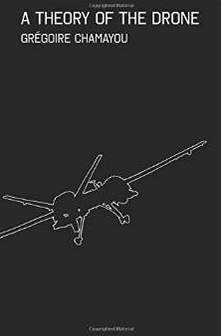Originally published by Breaking Modern:
The Islamic State of Iraq and Syria (ISIS) has turned its destructive attention against archaeological treasures – and it’s partly our fault.
This week the United Nations called ISIS’ destruction of the 2,000-year-old Parthian city of Hatra a war crime. This follows reports that ISIS blew up the ancient Assyrian capital city of Dur Sharrukin and Nimrud, “known as Calah or Kalhu in the Bible … capital of the Neo-Assyrian Empire, which flourished under King Ashurnasirpal II in the First Millennium BC.”

The group released a video of its members taking sledgehammers and electric drills to antiquities on display at the museum at Mosul, currently under ISIS rule. Looting of archaeological sites is rampant.
The cradle of Western civilization is losing buildings and artifacts that have survived countless invading armies. The loss is staggering, incomprehensible and irreplaceable.
There are several motivations behind what the United Nations Educational, Scientific and Cultural Organization (UNESCO) calls “cultural cleansing.”
One is economic.
“ISIS is said to be encouraging civilians to plunder historic sites, and charging a 20% tax on anything they sell. Intelligence officials say looting is the terror group’s second largest source of income after oil,” according to New York Magazine.
If we are to take ISIS at its word, there is also a religious motivation. According to at least one video released by the group, the destruction is an attempt to carry out Islamic law. “A man in the video says the Prophet Mohammed ordered to get rid of statues and relics, and that the objects are idols for Assyrians and Akkadians,” reports RT.
But there is a deeper underlying reason that radical Islamists have declared war on historically significant relics under their control – one that most Western journalists are too deeply embedded within their own culture and political paradigm to discern.
Cornell archaeologist Sturt Manning speaks for many when he tells CNN that the problem is ignorance.
Manning suggests that maybe the ISIS guys simply don’t understand why history and archaeology matter:
The destruction eloquently speaks of the human folly and senseless violence that drives ISIS. The terror group is destroying the evidence of the great history of Iraq; it has to, as this history attests to a rich alternative to its barbaric nihilism.”

Never believe people who tell you that other people’s behavior has no rational explanation, that they are “senseless” or nihilistic. People do things for a reason. Just because you don’t know what it is doesn’t mean that it doesn’t exist. In the case of ISIS, many of its members are Western-educated and highly intelligent. They know what they are doing.
Manning’s conclusion that “Providing educational opportunities and empowering communities to learn more about their cultures and histories, and those of others, is one of the best ways to eradicate destructive hatred and violence,” is facile and lazy and in no way explains what’s going on in Iraq and Syria.
In addition to the religious and financial motivations, these acts – like the 2001 bombing by the Taliban of the giant Buddhas at Bamiyan – are cries for attention by people who have been completely marginalized from the international system.
We were smarter before 9/11.

Writing in USA Today in March 2001, W.L. Rathje noted that Sunni Islam’s strictures against idolatry turned against statues that had survived centuries of Muslim occupation in large part as a way of getting the attention of the West:
Probably most important, the Taliban government for more than a year has been requesting international humanitarian aid for a country ravaged by drought, earthquakes, and war. No aid is forthcoming as long as the Taliban harbor international terrorists such as Osama bin Laden, an anathema to key voting members of the UN Security Council, including the United States, Russia (where the Taliban are working with the Chechnyan [sic] rebels), and China (where the Taliban are active among Muslim separatists).
As the Taliban see it, the UN and others (such as New York’s Metropolitan Museum of Art, the British Museum, Taiwan’s National Palace Museum, and even such Taliban friends as Iran, Pakistan, and Sri Lanka) will give millions of dollars to save un-Islamic stone statues but not one cent to save the lives of Afghani [sic] men, women, and children.
It is not America and the West’s air war against the Islamic State that is prompting its attacks against archaeological treasures. It is the way that it is being carried out: using remote control drone aircraft whose downing cannot hurt a single pilot, laser-guided missiles fired by high-altitude fighter jets far out of reach of antiaircraft guns — not really a war at all but a one-sided onslaught in which the US-led coalition brutalizes an adversary that has 0.00% chance of fighting back.
Like the Taliban in 2001 at the time of the Buddha bombings, ISIS has nothing to lose.
As Machiavelli wrote hundreds of years ago in a book that ought to have been read by the signers of the Treaty of Versailles, nothing is more dangerous than an enemy backed into a corner. It is always wise, he counseled, to allow a graceful exit – and to be willing to negotiate. Especially when you are going to win.
Arrogance and technology are merging to create a post-democratic America accountable to no one, not even its own citizens, and thus impossible to talk to.
As Chamayou writes in A Theory of the Drone:
A sovereign, given that he never places himself in danger in the war, ‘can thus decide on war, without any significant reason, as a kind of amusement’ or hunting party … in a republican regime the situation is different” since “the consent of the citizens is required to decide whether or not war is to be declared.”
Chamayou argues that the “dronization” of American warfare – riskless attacks using unmanned aerial vehicles in distant lands – undermines this fundamental precept of representative government, that a United States that fights wars without the consent or even discussion of its citizens is no longer a democracy.

If you think that’s terrifying, and I do, imagine how it looks on the ground in Iraq and Syria. Like them or not – and I don’t – the leaders of the Islamic State know that they cannot and will not ever have a seat at the table with a mega-superpower that demands unconditional surrender and refuses to negotiate with terrorists.
That was the situation in 2001. The Taliban controlled 95 percent of the territory of Afghanistan, and had been in effective control of the vast majority of the nation since 1996, yet the United States and therefore the world refused to acknowledge them as a legitimate government.
They weren’t stakeholders in the international community.
They were outlaws, outliers, rōnin. Like North Korea today, they were an isolated regime whose only way of getting headlines and attention from Western leaders was by lashing out.
It may well be that economic and trade sanctions and a unilateral air war designed to completely isolate ISIS is the correct path to drive them out of power – though it didn’t work against the Taliban in Afghanistan. But, until that happens, don’t be at all surprised if these policies contribute to the decision of radical Islamists to take bulldozers to the world’s most precious archaeological artifacts.


 At worst, drone operators report being mind
At worst, drone operators report being mind